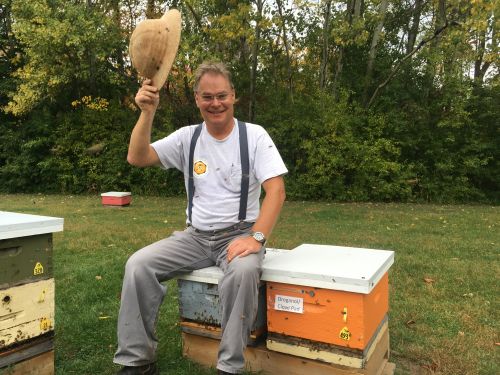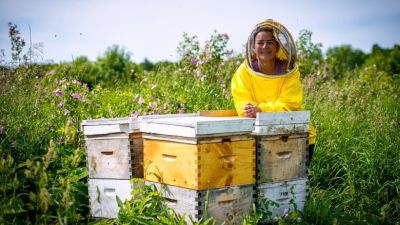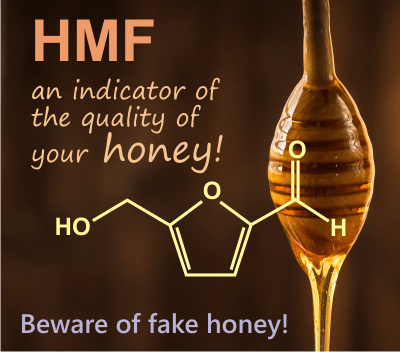How can we know if we are eating real honey or simply a fake one? How do we know we are spending lots of money on a healthy product we want and don’t harm us even more?
The truth is hard to know. We cannot buy a jar a honey, come home and start doing all the tests we heard about, to see if what we have is what is written on the label.
We need help from authorities. Somebody who can stop the adulterated honey from being laid on the shelves. A certified authority supported by law.
The good news is that there are actually countries where this does happen.
In July 2019, the Canadian Federal government blocked nearly 12,800 kg of adulterated honey from entering their market!
Marie-Claude Bibeau, federal Minister of Agriculture and Agri-Food made the announcement after the enforcement actions and surveillance by the Canadian Food Inspection Agency (CFIA). The adulterated honey was valued at around $77,000.
In what way was the honey adulterated?
It contained added sugars. And under law in Canada, honey cannot contain added sugars. If it does, it is considered adulterated and is not allowed to be sold as authentic honey across the country.
The testing started in June 2018 and ended in September 2018. The testing included 240 samples collected across Canada, taken from a variety of establishment types, including importers, brokers, distributors, blenders, graders, domestic processing facilities and retailers.
How was the testing done?
CFIA conducted analyses using Stable Isotope Ratio Analysis (SIRA) to detect adulteration with sugar cane and corn syrups (C4 sugars). Nuclear Magnetic Resonance (NMR) analyses were conducted by a contract laboratory to detect added foreign sugars from these as well as other sources such as C3 sugars. NMR analyses were conducted for the purposes of both detecting adulteration in the samples and informing CFIA as to effectiveness of this technique to complement SIRA testing.
The SIRA testing assessment is based on an internationally recognized Association of Official Analytical Chemists (AOAC) method and has a threshold limit for detection of adulteration of 7% calculated C4 sugars. The NMR testing assessment is based on the comparison of the sample to the profile of authentic honey, developed from the analysis of over 18,000 authentic honey samples and sugar syrups used for adulteration.
The results?
Testings concluded that 188 of the 240 samples inspected (78.3%), collected from across Canada, were authentic honey. The rest of 52 samples (21.7%) contained added sugars. According to CFIA, all domestic samples were satisfactory by both tests, while the imported samples were not. Unfortunately they did not specify from which countries or from what brands. Marketing politics probably, though to the people around the world, it would have been good to know.
A government release states that the sampling was targeted to focus on risk areas, including establishments with a history of non-compliance and unusual trading patterns.
What did the authorities do?
Starting with January 3, 2019, CFIA had taken enforcement actions that prevented an estimated 12,762 kg of adulterated honey valued at $76,758 CAD from entering the Canadian market. These actions included disposal of product or removal from Canada.
In 2019 the Government of Canada introduced the Food Policy for Canada. That provides $24.4 million over five years to the CFIA, starting in the 2019-2020 year. It also includes $5.2 million ongoing, to crack down on food fraud, which is the mislabeling and mishandling of food products.
Canada has regulatory requirements for honey!
Honey sold in Canada must comply with the Food and Drugs Act (FDA), the Food and Drugs Regulations (FDR), the Safe Food for Canadians Act (SFCA) and the Safe Food for Canadians Regulations (SFCR).
All Canadian beekeepers are protected and they all comply with the preventive controls for honey products. There are very serious penalties for non-compliance. CFIA has a variety of control and enforcement measures at its disposition, including product detention, disposal, order to remove from Canada, and prosecution. Enforcement actions in cases of non-compliance take into consideration the harm caused by the non-compliance, the compliance history of the regulated party and whether there was intent to violate federal requirements. Additionally, under the SFCR, CFIA has the ability to suspend or cancel a licence.
What else does CFIA do for honey?
Besides the testing program to analyse for adulterants such as sugars and/or syrup added to honey, the Agency also monitors honey for veterinary drug residues, chemical contaminants, and compliance with specifications of the standard, such as moisture content.
Canadian beekeeping industry
Canada has over 8,400 beekeepers, with a total of more than 672,000 colonies. It’s a a vibrant and flourishing industry. The majority of honey bee colonies are where long summer days are ideal for foraging: Alberta, Saskatchewan and Manitoba, which collectively account for 84% of the country’s total honey production. In total, Canadian honeybee colonies yielded more than 75 million pounds of honey. The total value of honey produced in Canada totals over $176 million.
 picture source: uoguelph.ca
picture source: uoguelph.ca
They export honey mainly to The United States, accounting for 77% of all honey exports. Japan and China are the second and third largest export destinations respectively.
Not only honey is obtained from beekeeping, but also enriched harvests. Canada is the 1st in the world for canola / oil seed rape production (also giving rapeseed honey, so much appreciated for its digestive properties), it ranks 2nd in the world for blueberry production – which also gives the blueberry honey, probably the most powerful antioxidant honey and it is 16th in the world for apple production. Beekeepers supply around 15,000 colonies for the pollination of tree fruit, thus also producing a flavored apple honey.
In 2019, starting on 8 September and lasting till 12 September, in Montreal will take place The 46th Apimondia International Apicultural Congress. Visit their website and stay tune for interesting details to come.
References:
http://inspection.gc.ca/about-the-cfia/science/our-research-and-publications/report/eng/1557531883418/1557531883647
Picture reference: https://www.cbc.ca/news/canada/montreal/stolen-beehives-upper-laurentians-1.3622316




